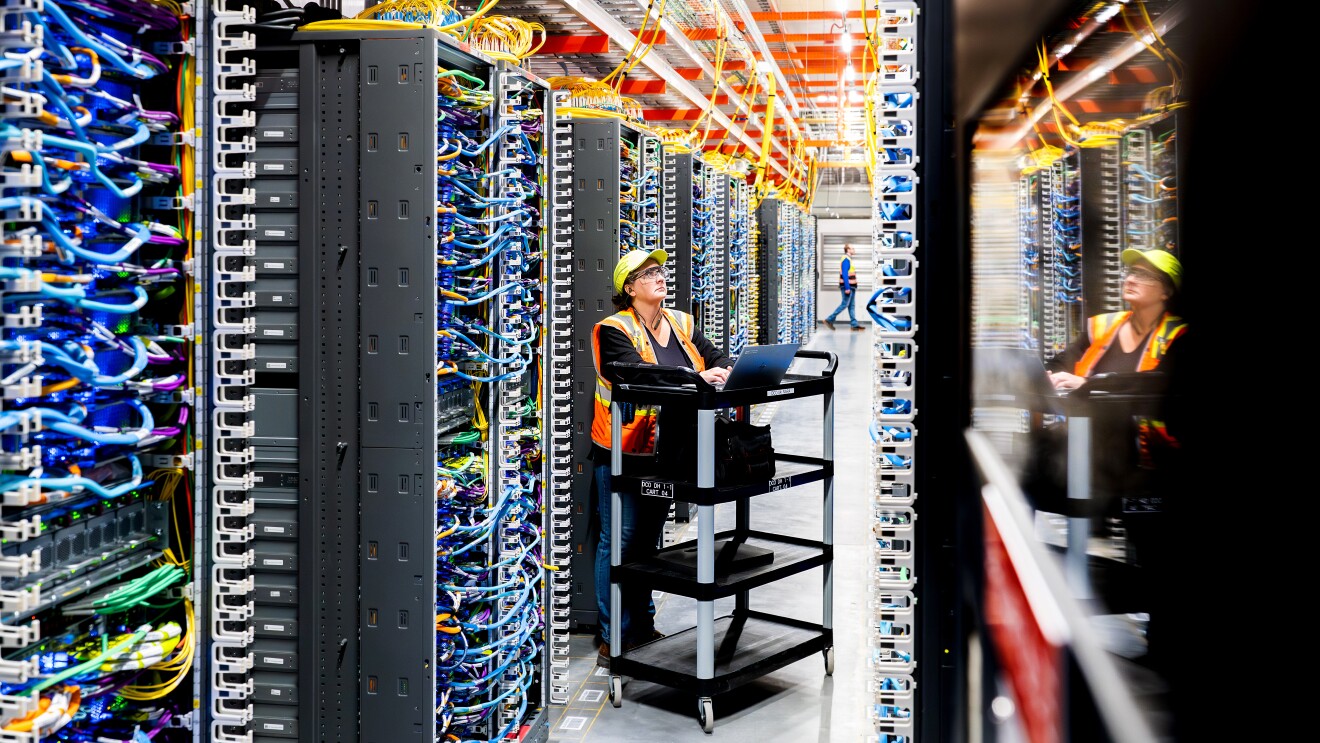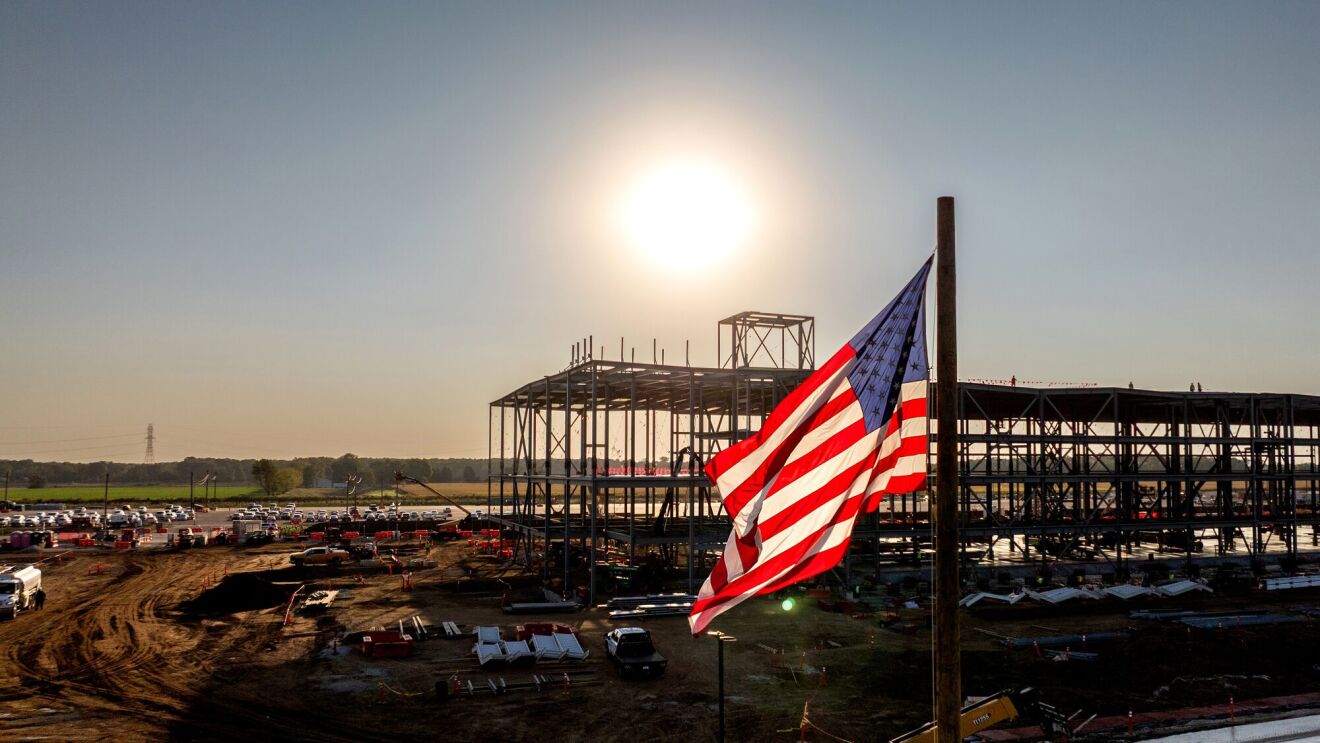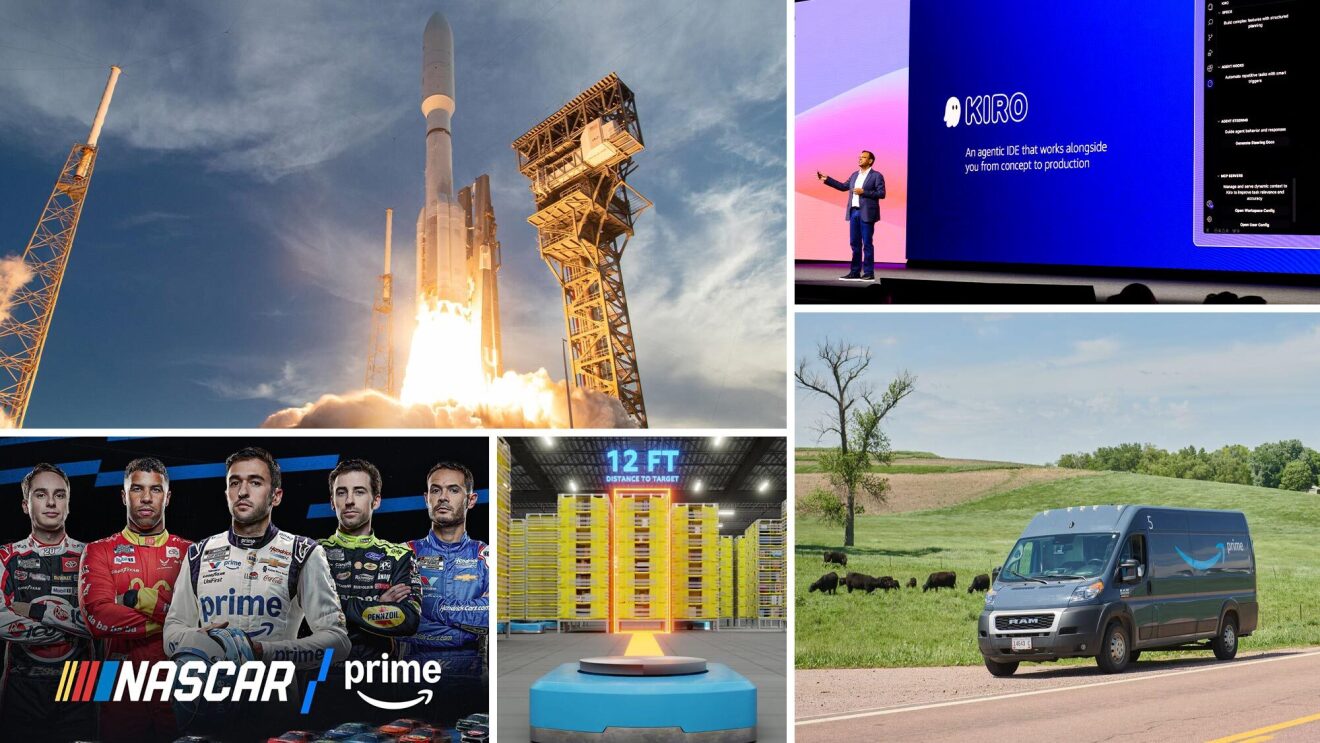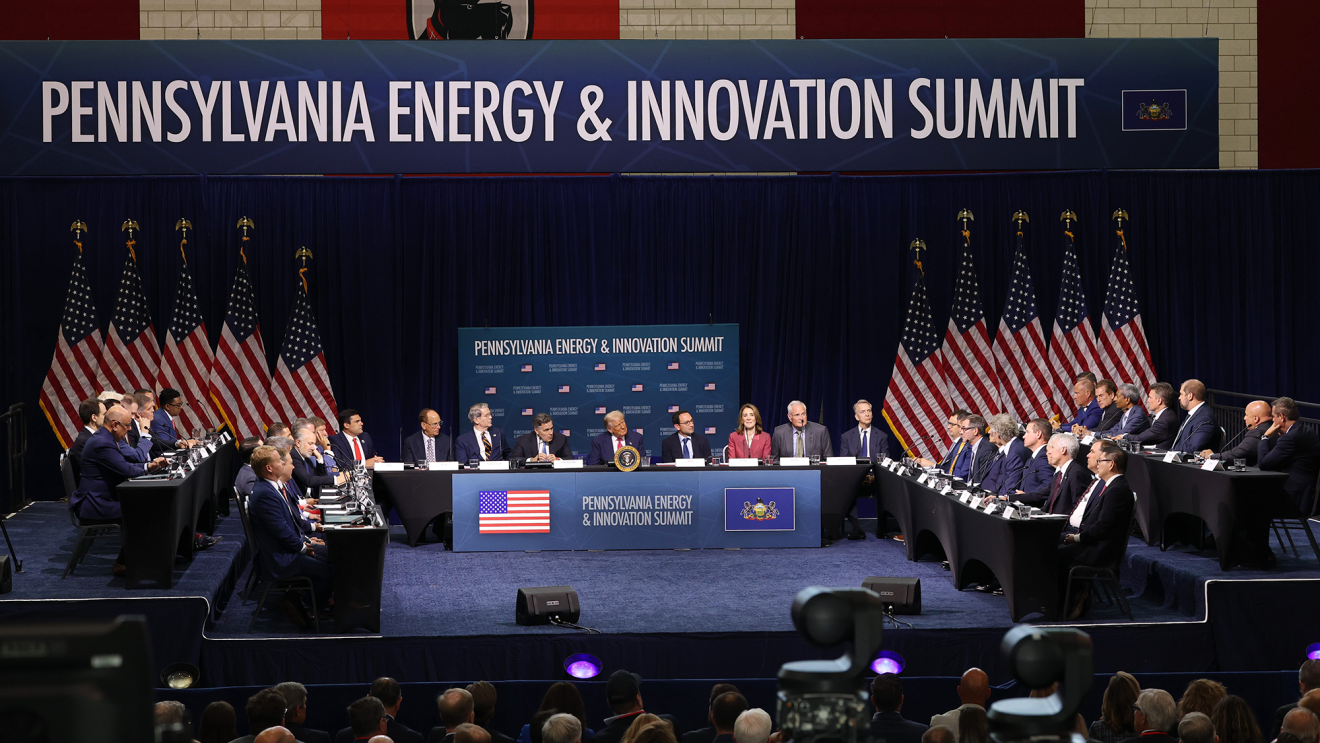To our shareowners:
Something strange and remarkable has happened over the last 20 years. Take a look at these numbers:
1999 3%
2000 3%
2001 6%
2002 17%
2003 22%
2004 25%
2005 28%
2006 28%
2007 29%
2008 30%
2009 31%
2010 34%
2011 38%
2012 42%
2013 46%
2014 49%
2015 51%
2016 54%
2017 56%
2018 58%
2000 3%
2001 6%
2002 17%
2003 22%
2004 25%
2005 28%
2006 28%
2007 29%
2008 30%
2009 31%
2010 34%
2011 38%
2012 42%
2013 46%
2014 49%
2015 51%
2016 54%
2017 56%
2018 58%
The percentages represent the share of physical gross merchandise sales sold on Amazon by independent third-party sellers – mostly small- and medium-sized businesses – as opposed to Amazon retail’s own first party sales. Third-party sales have grown from 3% of the total to 58%. To put it bluntly:
Third-party sellers are kicking our first party butt. Badly.
And it’s a high bar too because our first-party business has grown dramatically over that period, from $1.6 billion in 1999 to $117 billion this past year. The compound annual growth rate for our first-party business in that time period is 25%. But in that same time, third-party sales have grown from $0.1 billion to $160 billion – a compound annual growth rate of 52%. To provide an external benchmark, eBay’s gross merchandise sales in that period have grown at a compound rate of 20%, from $2.8 billion to $95 billion.
Why did independent sellers do so much better selling on Amazon than they did on eBay? And why were independent sellers able to grow so much faster than Amazon’s own highly organized first-party sales organization? There isn’t one answer, but we do know one extremely important part of the answer:
We helped independent sellers compete against our first-party business by investing in and offering them the very best selling tools we could imagine and build. There are many such tools, including tools that help sellers manage inventory, process payments, track shipments, create reports, and sell across borders – and we’re inventing more every year. But of great importance are Fulfillment by Amazon and the Prime membership program. In combination, these two programs meaningfully improved the customer experience of buying from independent sellers. With the success of these two programs now so well established, it’s difficult for most people to fully appreciate today just how radical those two offerings were at the time we launched them. We invested in both of these programs at significant financial risk and after much internal debate. We had to continue investing significantly over time as we experimented with different ideas and iterations. We could not foresee with certainty what those programs would eventually look like, let alone whether they would succeed, but they were pushed forward with intuition and heart, and nourished with optimism.
Intuition, curiosity, and the power of wandering
From very early on in Amazon’s life, we knew we wanted to create a culture of builders – people who are curious, explorers. They like to invent. Even when they’re experts, they are “fresh” with a beginner’s mind. They see the way we do things as just the way we do things now. A builder’s mentality helps us approach big, hard-to-solve opportunities with a humble conviction that success can come through iteration: invent, launch, reinvent, relaunch, start over, rinse, repeat, again and again. They know the path to success is anything but straight.
Sometimes (often actually) in business, you do know where you’re going, and when you do, you can be efficient. Put in place a plan and execute. In contrast, wandering in business is not efficient … but it’s also not random. It’s guided – by hunch, gut, intuition, curiosity, and powered by a deep conviction that the prize for customers is big enough that it’s worth being a little messy and tangential to find our way there. Wandering is an essential counter-balance to efficiency. You need to employ both. The outsized discoveries – the “non-linear” ones – are highly likely to require wandering.
AWS’s millions of customers range from startups to large enterprises, government entities to nonprofits, each looking to build better solutions for their end users. We spend a lot of time thinking about what those organizations want and what the people inside them – developers, dev managers, ops managers, CIOs, chief digital officers, chief information security officers, etc. – want.
Much of what we build at AWS is based on listening to customers. It’s critical to ask customers what they want, listen carefully to their answers, and figure out a plan to provide it thoughtfully and quickly (speed matters in business!). No business could thrive without that kind of customer obsession. But it’s also not enough. The biggest needle movers will be things that customers don’t know to ask for. We must invent on their behalf. We have to tap into our own inner imagination about what’s possible.
AWS itself – as a whole – is an example. No one asked for AWS. No one. Turns out the world was in fact ready and hungry for an offering like AWS but didn’t know it. We had a hunch, followed our curiosity, took the necessary financial risks, and began building – reworking, experimenting, and iterating countless times as we proceeded.
Within AWS, that same pattern has recurred many times. For example, we invented DynamoDB, a highly scalable, low latency key-value database now used by thousands of AWS customers. And on the listening carefully-to-customers side, we heard loudly that companies felt constrained by their commercial database options and had been unhappy with their database providers for decades – these offerings are expensive, proprietary, have high-lock-in and punitive licensing terms. We spent several years building our own database engine, Amazon Aurora, a fully-managed MySQL and PostgreSQL-compatible service with the same or better durability and availability as the commercial engines, but at one-tenth of the cost. We were not surprised when this worked.
But we’re also optimistic about specialized databases for specialized workloads. Over the past 20 to 30 years, companies ran most of their workloads using relational databases. The broad familiarity with relational databases among developers made this technology the go-to even when it wasn’t ideal. Though sub-optimal, the data set sizes were often small enough and the acceptable query latencies long enough that you could make it work. But today, many applications are storing very large amounts of data – terabytes and petabytes. And the requirements for apps have changed. Modern applications are driving the need for low latencies, real-time processing, and the ability to process millions of requests per second. It’s not just key-value stores like DynamoDB, but also in-memory databases like Amazon ElastiCache, time series databases like Amazon Timestream, and ledger solutions like Amazon Quantum Ledger Database – the right tool for the right job saves money and gets your product to market faster.
We’re also plunging into helping companies harness Machine Learning. We’ve been working on this for a long time, and, as with other important advances, our initial attempts to externalize some of our early internal Machine Learning tools were failures. It took years of wandering – experimentation, iteration, and refinement, as well as valuable insights from our customers – to enable us to find SageMaker, which launched just 18 months ago. SageMaker removes the heavy lifting, complexity, and guesswork from each step of the machine learning process – democratizing AI. Today, thousands of customers are building machine learning models on top of AWS with SageMaker. We continue to enhance the service, including by adding new reinforcement learning capabilities. Reinforcement learning has a steep learning curve and many moving parts, which has largely put it out of reach of all but the most well-funded and technical organizations, until now. None of this would be possible without a culture of curiosity and a willingness to try totally new things on behalf of customers. And customers are responding to our customer-centric wandering and listening – AWS is now a $30 billion annual run rate business and growing fast.
Imagining the impossible
Amazon today remains a small player in global retail. We represent a low single-digit percentage of the retail market, and there are much larger retailers in every country where we operate. And that’s largely because nearly 90% of retail remains offline, in brick and mortar stores. For many years, we considered how we might serve customers in physical stores, but felt we needed first to invent something that would really delight customers in that environment. With Amazon Go, we had a clear vision. Get rid of the worst thing about physical retail: checkout lines. No one likes to wait in line. Instead, we imagined a store where you could walk in, pick up what you wanted, and leave.
Getting there was hard. Technically hard. It required the efforts of hundreds of smart, dedicated computer scientists and engineers around the world. We had to design and build our own proprietary cameras and shelves and invent new computer vision algorithms, including the ability to stitch together imagery from hundreds of cooperating cameras. And we had to do it in a way where the technology worked so well that it simply receded into the background, invisible. The reward has been the response from customers, who’ve described the experience of shopping at Amazon Go as “magical.” We now have 10 stores in Chicago, San Francisco, and Seattle, and are excited about the future.
Failure needs to scale too
As a company grows, everything needs to scale, including the size of your failed experiments. If the size of your failures isn’t growing, you’re not going to be inventing at a size that can actually move the needle. Amazon will be experimenting at the right scale for a company of our size if we occasionally have multibillion-dollar failures. Of course, we won’t undertake such experiments cavalierly. We will work hard to make them good bets, but not all good bets will ultimately pay out. This kind of large-scale risk taking is part of the service we as a large company can provide to our customers and to society. The good news for shareowners is that a single big winning bet can more than cover the cost of many losers.
Development of the Fire phone and Echo was started around the same time. While the Fire phone was a failure, we were able to take our learnings (as well as the developers) and accelerate our efforts building Echo and Alexa. The vision for Echo and Alexa was inspired by the Star Trek computer. The idea also had origins in two other arenas where we’d been building and wandering for years: machine learning and the cloud. From Amazon’s early days, machine learning was an essential part of our product recommendations, and AWS gave us a front row seat to the capabilities of the cloud. After many years of development, Echo debuted in 2014, powered by Alexa, who lives in the AWS cloud.
No customer was asking for Echo. This was definitely us wandering. Market research doesn’t help. If you had gone to a customer in 2013 and said “Would you like a black, always-on cylinder in your kitchen about the size of a Pringles can that you can talk to and ask questions, that also turns on your lights and plays music?” I guarantee you they’d have looked at you strangely and said “No, thank you.”
Since that first-generation Echo, customers have purchased more than 100 million Alexa-enabled devices. Last year, we improved Alexa’s ability to understand requests and answer questions by more than 20%, while adding billions of facts to make Alexa more knowledgeable than ever. Developers doubled the number of Alexa skills to over 80,000, and customers spoke to Alexa tens of billions more times in 2018 compared to 2017. The number of devices with Alexa built-in more than doubled in 2018. There are now more than 150 different products available with Alexa built-in, from headphones and PCs to cars and smart home devices. Much more to come!
One last thing before closing. As I said in the first shareholder letter more than 20 years ago, our focus is on hiring and retaining versatile and talented employees who can think like owners. Achieving that requires investing in our employees, and, as with so many other things at Amazon, we use not just analysis but also intuition and heart to find our way forward.
Last year, we raised our minimum wage to $15-an-hour for all full-time, part-time, temporary, and seasonal employees across the U.S. This wage hike benefitted more than 250,000 Amazon employees, as well as over 100,000 seasonal employees who worked at Amazon sites across the country last holiday. We strongly believe that this will benefit our business as we invest in our employees. But that is not what drove the decision. We had always offered competitive wages. But we decided it was time to lead – to offer wages that went beyond competitive. We did it because it seemed like the right thing to do.
Today I challenge our top retail competitors (you know who you are!) to match our employee benefits and our $15 minimum wage. Do it! Better yet, go to $16 and throw the gauntlet back at us. It’s a kind of competition that will benefit everyone.
Many of the other programs we have introduced for our employees came as much from the heart as the head. I’ve mentioned before the Career Choice program, which pays up to 95% of tuition and fees towards a certificate or diploma in qualified fields of study, leading to in-demand careers for our associates, even if those careers take them away from Amazon. More than 16,000 employees have now taken advantage of the program, which continues to grow. Similarly, our Career Skills program trains hourly associates in critical job skills like resume writing, how to communicate effectively, and computer basics. In October of last year, in continuation of these commitments, we signed the President’s Pledge to America’s Workers and announced we will be upskilling 50,000 U.S. employees through our range of innovative training programs.
Our investments are not limited to our current employees or even to the present. To train tomorrow’s workforce, we have pledged $50 million, including through our recently announced Amazon Future Engineer program, to support STEM and CS education around the country for elementary, high school, and university students, with a particular focus on attracting more girls and minorities to these professions. We also continue to take advantage of the incredible talents of our veterans. We are well on our way to meeting our pledge to hire 25,000 veterans and military spouses by 2021. And through the Amazon Technical Veterans Apprenticeship program, we are providing veterans on-the-job training in fields like cloud computing.
A huge thank you to our customers for allowing us to serve you while always challenging us to do even better, to our shareowners for your continuing support, and to all our employees worldwide for your hard work and pioneering spirit. Teams all across Amazon are listening to customers and wandering on their behalf!
As always, I attach a copy of our original 1997 letter. It remains Day 1.
Sincerely,
Jeffrey P. Bezos
Founder and Chief Executive Officer
Amazon.com, Inc.
Founder and Chief Executive Officer
Amazon.com, Inc.
To our shareholders:
Amazon.com passed many milestones in 1997: by year-end, we had served more than 1.5 million customers, yielding 838% revenue growth to $147.8 million, and extended our market leadership despite aggressive competitive entry.
But this is Day 1 for the Internet and, if we execute well, for Amazon.com. Today, online commerce saves customers money and precious time. Tomorrow, through personalization, online commerce will accelerate the very process of discovery. Amazon.com uses the Internet to create real value for its customers and, by doing so, hopes to create an enduring franchise, even in established and large markets.
We have a window of opportunity as larger players marshal the resources to pursue the online opportunity and as customers, new to purchasing online, are receptive to forming new relationships. The competitive landscape has continued to evolve at a fast pace. Many large players have moved online with credible offerings and have devoted substantial energy and resources to building awareness, traffic, and sales. Our goal is to move quickly to solidify and extend our current position while we begin to pursue the online commerce opportunities in other areas. We see substantial opportunity in the large markets we are targeting. This strategy is not without risk: it requires serious investment and crisp execution against established franchise leaders.
It’s All About the Long Term
We believe that a fundamental measure of our success will be the shareholder value we create over the long term. This value will be a direct result of our ability to extend and solidify our current market leadership position. The stronger our market leadership, the more powerful our economic model. Market leadership can translate directly to higher revenue, higher profitability, greater capital velocity, and correspondingly stronger returns on invested capital.
Our decisions have consistently reflected this focus. We first measure ourselves in terms of the metrics most indicative of our market leadership: customer and revenue growth, the degree to which our customers continue to purchase from us on a repeat basis, and the strength of our brand. We have invested and will continue to invest aggressively to expand and leverage our customer base, brand, and infrastructure as we move to establish an enduring franchise.
Because of our emphasis on the long term, we may make decisions and weigh tradeoffs differently than some companies. Accordingly, we want to share with you our fundamental management and decision-making approach so that you, our shareholders, may confirm that it is consistent with your investment philosophy:
- We will continue to focus relentlessly on our customers.
- We will continue to make investment decisions in light of long-term market leadership considerations rather than short-term profitability considerations or short-term Wall Street reactions.
- We will continue to measure our programs and the effectiveness of our investments analytically, to jettison those that do not provide acceptable returns, and to step up our investment in those that work best. We will continue to learn from both our successes and our failures.
- We will make bold rather than timid investment decisions where we see a sufficient probability of gaining market leadership advantages. Some of these investments will pay off, others will not, and we will have learned another valuable lesson in either case.
- When forced to choose between optimizing the appearance of our GAAP accounting and maximizing the present value of future cash flows, we’ll take the cash flows.
- We will share our strategic thought processes with you when we make bold choices (to the extent competitive pressures allow), so that you may evaluate for yourselves whether we are making rational long-term leadership investments.
- We will work hard to spend wisely and maintain our lean culture. We understand the importance of continually reinforcing a cost-conscious culture, particularly in a business incurring net losses.
- We will balance our focus on growth with emphasis on long-term profitability and capital management. At this stage, we choose to prioritize growth because we believe that scale is central to achieving the potential of our business model.
- We will continue to focus on hiring and retaining versatile and talented employees, and continue to weight their compensation to stock options rather than cash. We know our success will be largely affected by our ability to attract and retain a motivated employee base, each of whom must think like, and therefore must actually be, an owner.
We aren’t so bold as to claim that the above is the “right” investment philosophy, but it’s ours, and we would be remiss if we weren’t clear in the approach we have taken and will continue to take.
With this foundation, we would like to turn to a review of our business focus, our progress in 1997, and our outlook for the future.
Obsess Over Customers
From the beginning, our focus has been on offering our customers compelling value. We realized that the Web was, and still is, the World Wide Wait. Therefore, we set out to offer customers something they simply could not get any other way, and began serving them with books. We brought them much more selection than was possible in a physical store (our store would now occupy 6 football fields), and presented it in a useful, easy- to-search, and easy-to-browse format in a store open 365 days a year, 24 hours a day. We maintained a dogged focus on improving the shopping experience, and in 1997 substantially enhanced our store. We now offer customers gift certificates, 1-Click shopping℠, and vastly more reviews, content, browsing options, and recommendation features. We dramatically lowered prices, further increasing customer value. Word of mouth remains the most powerful customer acquisition tool we have, and we are grateful for the trust our customers have placed in us. Repeat purchases and word of mouth have combined to make Amazon.com the market leader in online bookselling.
By many measures, Amazon.com came a long way in 1997:
- Sales grew from $15.7 million in 1996 to $147.8 million – an 838% increase.
- Cumulative customer accounts grew from 180,000 to 1,510,000 – a 738% increase.
- The percentage of orders from repeat customers grew from over 46% in the fourth quarter of 1996 to over 58% in the same period in 1997.
- In terms of audience reach, per Media Metrix, our Web site went from a rank of 90th to within the top 20.
- We established long-term relationships with many important strategic partners, including America Online, Yahoo!, Excite, Netscape, GeoCities, AltaVista, @Home, and Prodigy.
Infrastructure
During 1997, we worked hard to expand our business infrastructure to support these greatly increased traffic, sales, and service levels:
- Amazon.com’s employee base grew from 158 to 614, and we significantly strengthened our management team.
- Distribution center capacity grew from 50,000 to 285,000 square feet, including a 70% expansion of our Seattle facilities and the launch of our second distribution center in Delaware in November.
- Inventories rose to over 200,000 titles at year-end, enabling us to improve availability for our customers.
- Our cash and investment balances at year-end were $125 million, thanks to our initial public offering in May 1997 and our $75 million loan, affording us substantial strategic flexibility.
Our Employees
The past year’s success is the product of a talented, smart, hard-working group, and I take great pride in being a part of this team. Setting the bar high in our approach to hiring has been, and will continue to be, the single most important element of Amazon.com’s success.
It’s not easy to work here (when I interview people I tell them, “You can work long, hard, or smart, but at Amazon.com you can’t choose two out of three”), but we are working to build something important, something that matters to our customers, something that we can all tell our grandchildren about. Such things aren’t meant to be easy. We are incredibly fortunate to have this group of dedicated employees whose sacrifices and passion build Amazon.com.
Goals for 1998
We are still in the early stages of learning how to bring new value to our customers through Internet commerce and merchandising. Our goal remains to continue to solidify and extend our brand and customer base. This requires sustained investment in systems and infrastructure to support outstanding customer convenience, selection, and service while we grow. We are planning to add music to our product offering, and over time we believe that other products may be prudent investments. We also believe there are significant opportunities to better serve our customers overseas, such as reducing delivery times and better tailoring the customer experience. To be certain, a big part of the challenge for us will lie not in finding new ways to expand our business, but in prioritizing our investments.
We now know vastly more about online commerce than when Amazon.com was founded, but we still have so much to learn. Though we are optimistic, we must remain vigilant and maintain a sense of urgency. The challenges and hurdles we will face to make our long-term vision for Amazon.com a reality are several: aggressive, capable, well-funded competition; considerable growth challenges and execution risk; the risks of product and geographic expansion; and the need for large continuing investments to meet an expanding market opportunity. However, as we’ve long said, online bookselling, and online commerce in general, should prove to be a very large market, and it’s likely that a number of companies will see significant benefit. We feel good about what we’ve done, and even more excited about what we want to do.
1997 was indeed an incredible year. We at Amazon.com are grateful to our customers for their business and trust, to each other for our hard work, and to our shareholders for their support and encouragement.
Jeffrey P. Bezos
Founder and Chief Executive Officer
Amazon.com, Inc.
Founder and Chief Executive Officer
Amazon.com, Inc.
Trending news and stories








